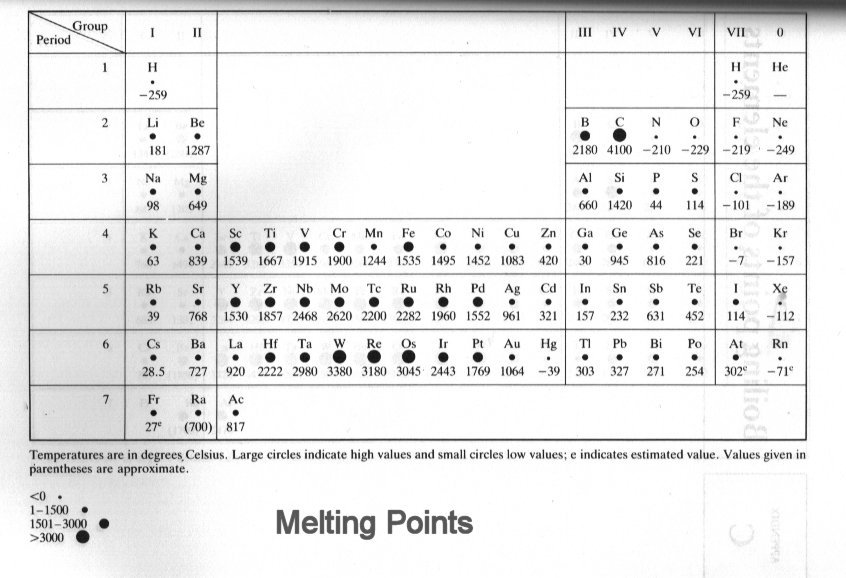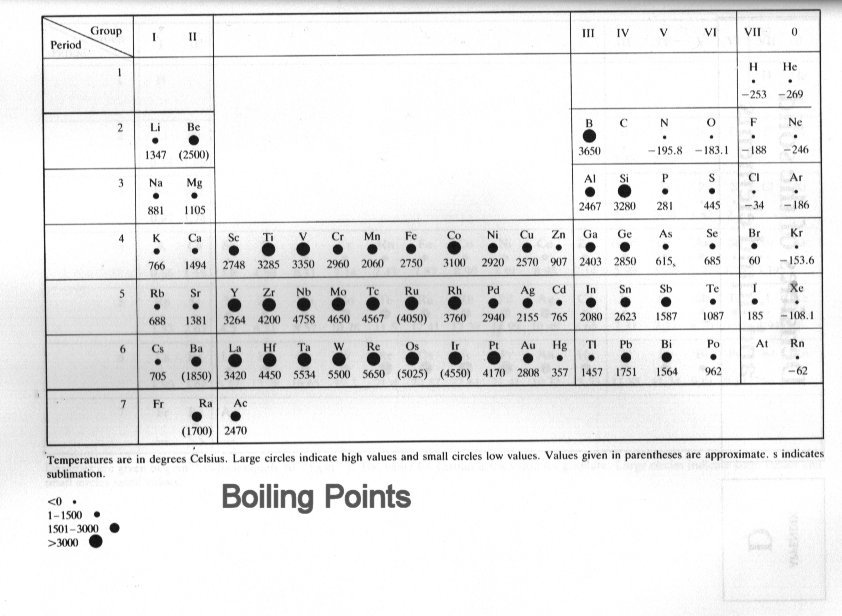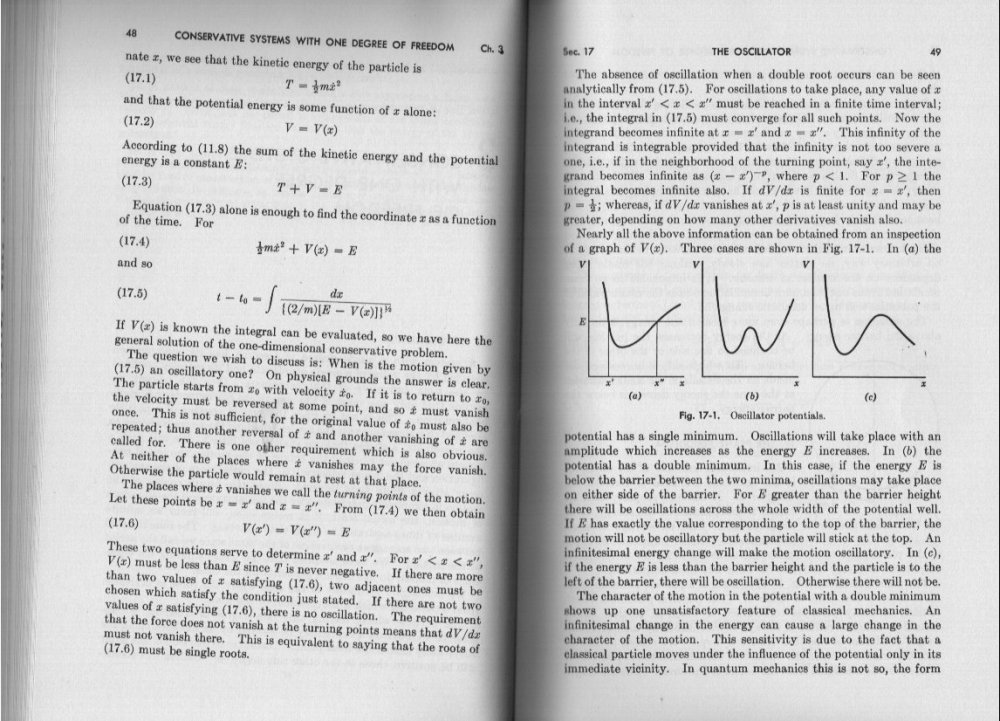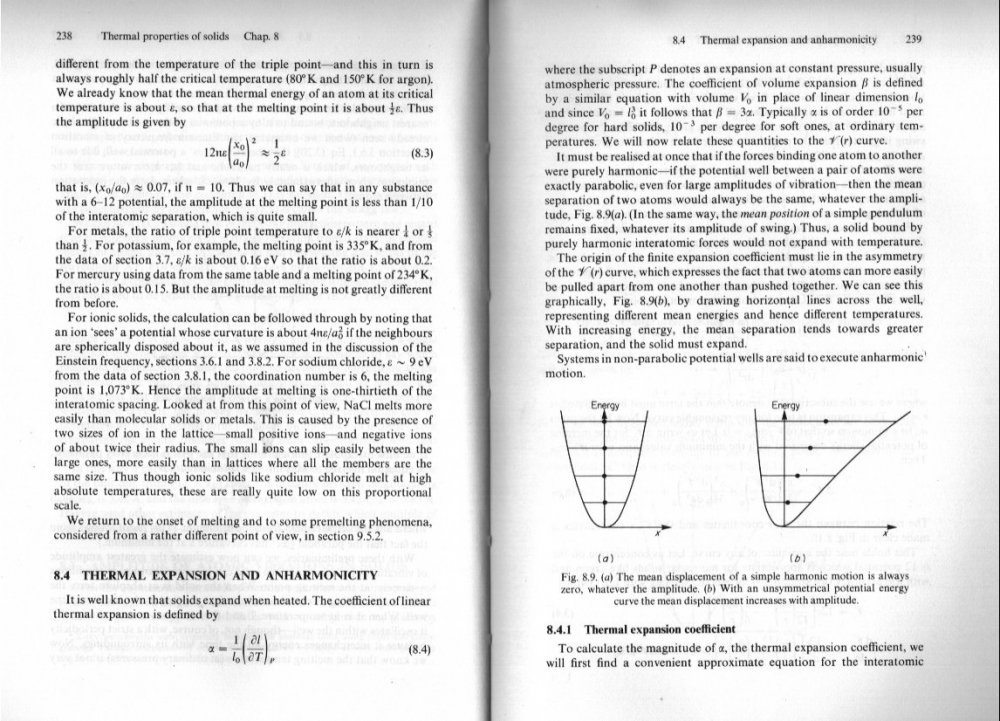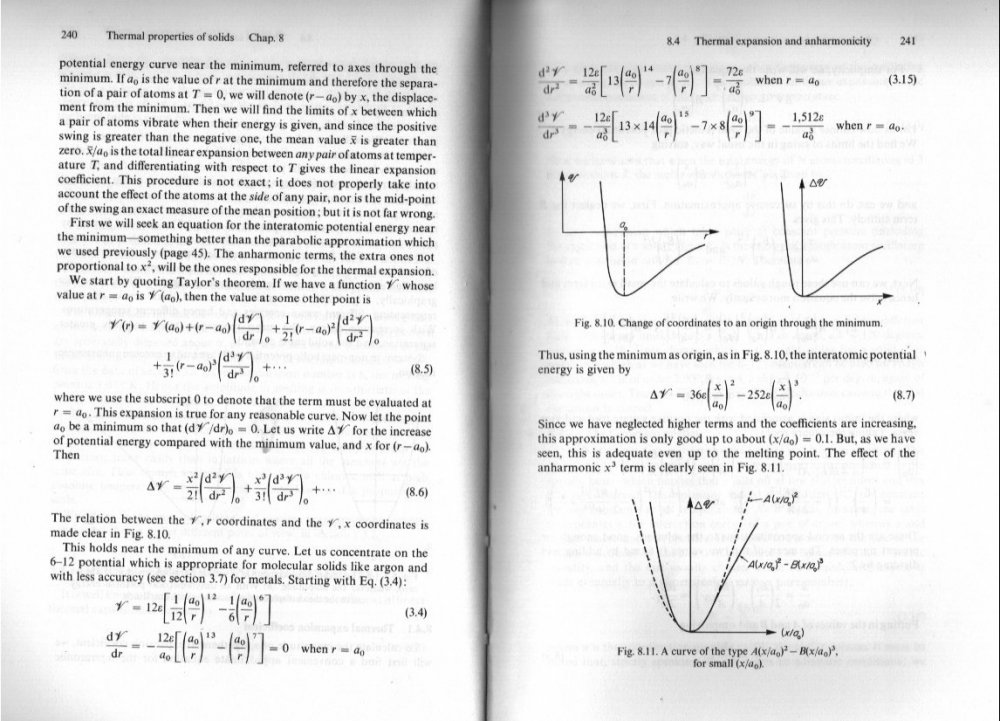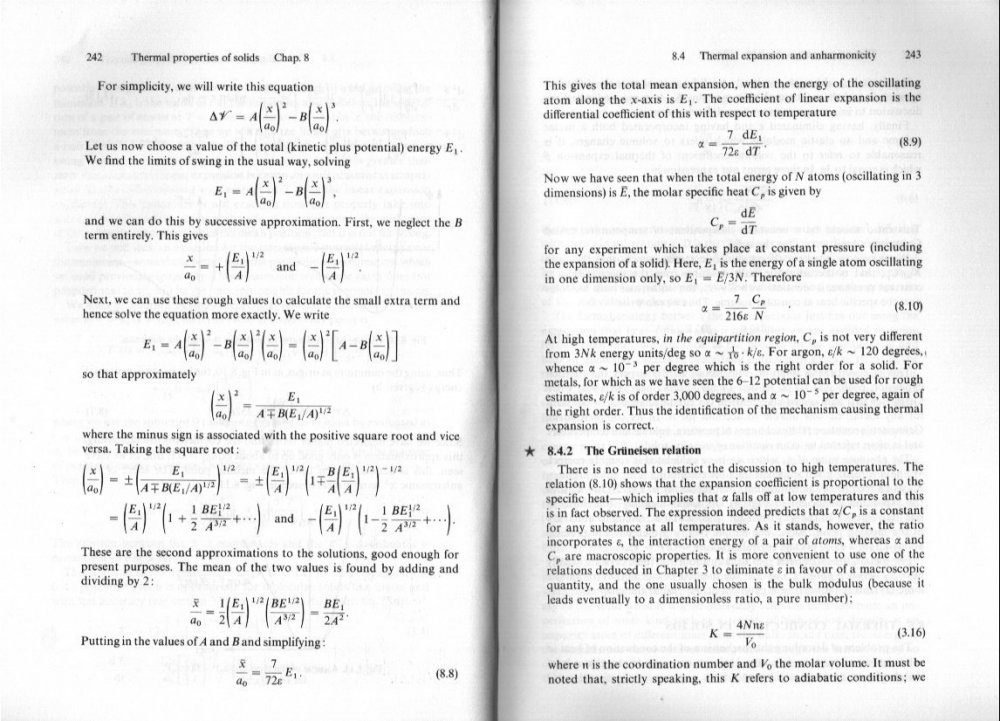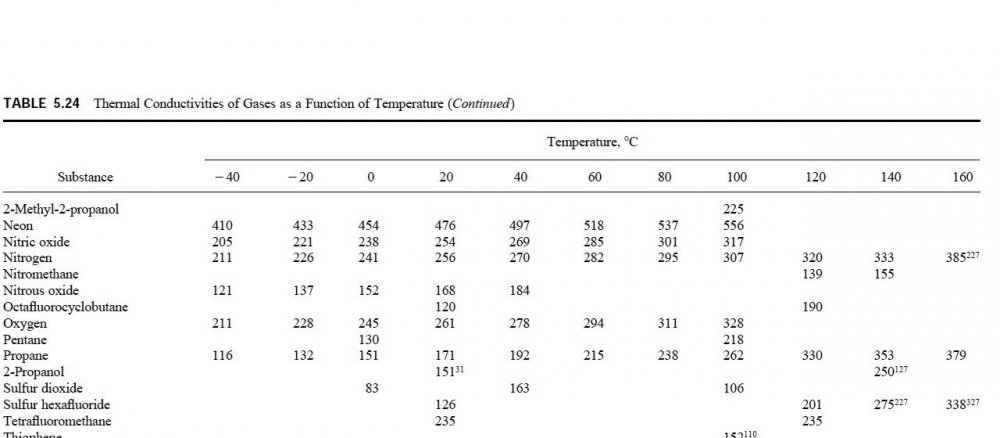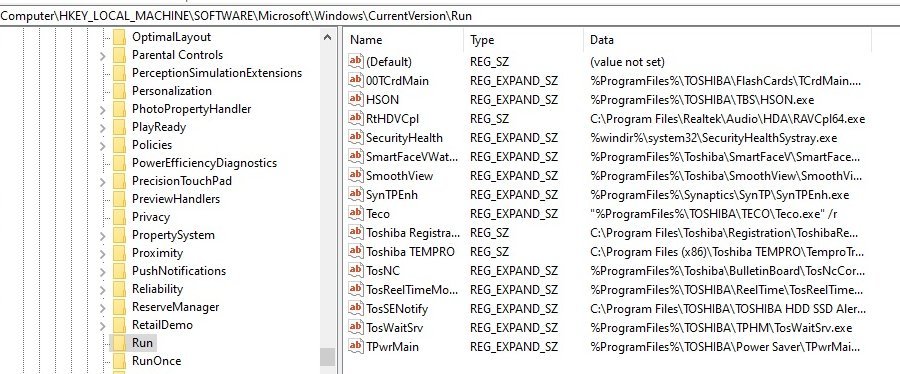-
Posts
18314 -
Joined
-
Last visited
-
Days Won
104
Content Type
Profiles
Forums
Events
Everything posted by studiot
-

Particle in a box; 'localized' integrals
studiot replied to Danijel Gorupec's topic in Quantum Theory
Of course it has a meaning. your integral represent the probability of finding the particle in that part of the box defined by your limits of integration. So when normalised this should be 1/2 for half the box and so on. Just as the integral formula you are summing is the probability of finding the particle between x and (x+dx) (or in some cases between (x-dx/2) and (x+dx/2) But as swansont says Of what use is it? Any interaction needs must involve the whole box. -
You also need to distinguish between the use of the entity [math]\frac{1}{\infty }[/math] in loose form by applied mathematicians (like me) and proper limits like this [math]\mathop {\lim }\limits_{x \to \infty } \frac{1}{{{x^n}}};x > 1,n \ge 0[/math] [math]\mathop {\lim }\limits_{n \to \infty } \frac{1}{{{x^n}}};x > 1,n \ge 0[/math] where if you pick the debarred values of x or n you will converge to 1 or 1/0
-
Excellent points +1 each It is instructive to consider this question in relation to the (usual form) periodic table. Here are two showing melting and boiling points. Can you see any pattern of clustering of solids, liquids and gases? Note that the alkali metals alkaline earths on the left are solids, whereas the elements near to inert gases on the right are often gaseous or liquid. But both Flourine and Lithium are the most reactive elements and head groups of high reactivity. This suggests two different types of reaction. And this is indeed the case and the reason why the state of an element does not depend on valency. The alkali metals can move towards an inert gas electron structure by donating an electron and becoming a positive ion, thus forming ionic bonds. The halogens move towards an inert gas configuration by gaining an electron and becoming negative ions which can participate in ionic bonds. Elements between these extreme tend to form covalent bonds and metals tend to join together to form metallic bonds.
-
Because this video is the best form of presentation of this paradox. Thank you for replying to my question (Which was actually for the moderators rather than you). What I am not sure of is what youare asking of us. Originally you asked But then your subsequent posts have been defending the video. So is the situation that you do not understand Special Relativity and want to learn how it works ? Or are you saying you understand SR and are promoting the video as correct? Note - the video author clearly doesn't and got his analysis wrong look for instance at this attachment. Can you explain why the velocity in the lower picture is not minus 2x (-2x) ? It is really important to strip away tha excessive circus and pantomime in the way that video is presented. So no, I cannot agree that it is the best form of presentation. Furthermore in your own postings here you have made the mistake of tryign to introduce an absolute frame of reference in saying, for instance Distance as measured by whom? The measurement of distance brings in another issue, that of simultaneity. How do you ensure that the zero on your ruler is at A at the same time you are reading the distance at B? And what do you mean by this in a world with no absolutes? This, actually is the prime question the Einstein goes to so much trouble to overcome. All the suprising effects flow from that.
-
Radon is a member of the noble or inert gases group (Helium, Neon, Argon, Krypton, Xenon and yes Radon is the 'heaviest') This group is called noble, like gold or platinum because it is chemically unreactive. In fact the atoms of the group are even more unreactive than gold or platinum so are also called inert. inert means that the atoms are very reluctant to react with any other atoms, even another noble gas atom. To form a solid they must react with several other atoms to form the links in the solid crystal. This only happens at very low temperatures and/or very high pressures. About the only atoms they will react with at normal laboratory conditions is Flourine, the most reactive element. So there you have it immovable object v irresistible force.
-
But why do I have to look at a Ytube video to find out what is going on?
-

Graphs with skipped independent-variable intervals
studiot replied to ScienceNostalgia101's topic in Mathematics
I don't think there is a 'correct' way. The important thing is not to give the impression that the graph have a particular value in the 'skipped bits' so clean breaks between the segments so that the plotted function does not directly connect across the skipped interval. -
A rather strange question considering the Clapeyron-Clausius equation (this is the right way round since Claperyon proposed it in 1837 and Clausius did not come into the picture until 1867) is concerned to change pf phase. There are two fundamental equations which govern equilibria between phases viz 1) The Phase rule (due to Gibbs) - this relates the number of components to the number of phases via the degrees of freedom f = c - p +2 where the symbols refer to their obvious quantities. 2) The Claperyon-Clausius equation (as formally stated by Claperyon) [math]\frac{{dP}}{{dT}} = \frac{{\Delta \bar S}}{{\Delta \bar V}} = \frac{\lambda }{{T\Delta \bar V}}[/math] and applies to any change of state, (fusion, vapourisation, sublimation and changes of crystal structure)
-
Going back to your original equation, please say what is your interest in this. You seem very specific in you questions/requirements, but rather woolly in your understanding of what the equation represents. Is this homework whre you are trying to answer a specific question? Or is this general study of anharmonic oscillators or what?
-
OK so here is more. Just keep in mind that swansont has repeated told you you need to have an idea of the form of the solution. Here is the energy (potential ) approach. The first three slides show a simple anharmonic oscillator (there are many types). Not the words on slide 1 that the potential well is symmetric for a harmonic oscillator and asymmetric for an anharmonic one as shown in their diagram 8.9. The fourth slide shows types of potentials in fig 17.1. The third one is the one discussed in the other book. Anharmonic equations can lead to elliptic integrals whcih have no analytical solution, so yes, these need tables or other numerical methods.
-
One way to handle this situation is to 'assume' a potential function as a solution, expanded as a Taylor series. I will post some more later. Going to a lecture on JC Maxwell tonight by Brian Clegg.
-
It is difficult to discuss Free Will without preconceptions and preconditions. Here is my proposal for an objective (ie without such encumberances) question that is as near to free will as I can get. You need to solve a difficult equation by numerical methods, since there are no known analytical ones. One characteristic of numerical methods is that they require an intitial guess as a seed the method can refine progressively. What will your initial guess be? You can choose from any number whatsoever.
-
This is from the 15 th Edition of Lange's handbook of Chemistry (there are at least 2 newer editions) The units are It's a bit skimpy, at a pinch you could compare with other close members of the homologous series for which more data is available. Does this help? This is from the 15 th Edition of Lange's handbook of Chemistry (there are at least 2 newer editions) The units are It's a bit skimpy, at a pinch you could compare with other close members of the homologous series for which more data is available. Does this help?
-
Unfortunately the version of W10 Microsft has benevolently bestowed upon me does not work like yours. Note I have no login screen. Sadly today was wasted trying this otherwise good idea. (not your fault) The second account was 100 times slower. Took about 2 hours to fully boot and about 20 minutes to shut down (log off). I did manage to delete a numebr of unecessary tasks from task scheduler which has helped, but there is still something taking resources in what is laughingly called the background.
-
Would this be a type of voluntary false confession syndrome ? https://en.wikipedia.org/wiki/False_confession
-
First let me thank you for introducing me to the Mandelbox, which I understand was first demonstrated in 2010 +1 I would like to discuss the danger inherent in what you are doing with reference to your first picture. Now here's the thing: The sort of image you show (on the top left) of photons is inherently different from the fractal surface you also exhibit at the top right. The difference is the scale invariance which is a fundamental property of fractals. If you were to enlarge the photon picture so that one blob occupied the same picture areas as the current 9, you would see just one blob. On the other hand if you enlarged the fractal image that way you would still see 9 blobs. I look forward to your comment on this difference.
-
Update. sfc reported that the were some corrupt files it could not fix. At least some seem to be to do with windows defender/security and there is some chatter on the web about this. I am still trying to figure out the important entries in the (long) log file. Meanwhile I decided to suppress the hibernation file and the pagefile since the HD has been implicated as overloaded (This is after all an older laptop, originally with W7) Yes an improvement while I will monitor. HD usage now tops out at 95% and there is no syrup like wait for a response. At least I can now stop crashing into safemode from triple boot Sorry String Junky your method does not work. Nor does using F8 - the PC is too fast for that I think. I am posting this history, assuming I am not boring folks. Please let me know if that is the case. I have benefited in the past from others who have detailed their experiences and am thinking of forming a "Let's hang BG club"
-
That's a pretty fair analogy. As soon as you introduce x and y, they have values, and every pair of values is unique.
-
Hi I've been thinking about you question and I'm not sure there is any specific test to be extracted from tabulated data; which is partly why Anscombe recommends (strongly) sketching a plot first. There are just so many different possible lines you could draw through a given set of points that comparing them pair by pair or even class by class is an overwhelming task. Further there is the question of endslopes. If you try to fit a linear line then you cannot have zero slope at the origin or a turnover to an asympote. A second order quadratic can do the first but not the second, you require at least a cubic to achieve this. There may also be points that have more certain values than others. For example consider a plank resting on two supports. At the support points the plank can have zero deflection (or it is not resting on its support!) Depending upon the support restraint it may also have a curvature or zero curvature. So these values can never be rejected.
-
Yes possibly. Strange's comment supplied the formula (I know it has an equals sign) for the circumference of any circle. That circle may be anywhere, hanging on a tree, spinning on the ice, just chilling in a deck chair. or even referenced to an x-y coordinate system. If you choose to reference it to an x-y coordinate system you can properly call the expression with an equals sign an equation. And you can then do much more with it. But you have to get the algebra right, so you need to revise your algebra. Furthermore once you have referenced your circle to a particular x-y system, it can no longer be anywhere. You have fixed it in space. Also you have to work with x and y , you can't just switch them into something else and bring in a freewheeling formula.
-
What are you trying to do here? Equation 1 is an unusual way of writing the standard equation of a circle x2 + y2 = r2 (note you don't need LaTex to write this, just use the sub and super script icons on the text input editor, labelled x2 and x2) your way puts you into immediate trouble since if D is the diameter D = 2r so equation 2 becomes [math]\frac{C}{2} = \sqrt {{r^2} - {{\left( {2r} \right)}^2}} = \sqrt { - 3{r^2}} [/math] So you are trying for the square root of a negative number. Furthermore if C is the length of the circumference, you can't just replace y with half of it.
-
Defrag is a continuous background process in W10 so all you get is a notice saying the disk does not need defframenting.(or so MS says) I did run checkdisk between one pair of reboots, but it 'found no problems' I plan to run windows system checker next, but that should take a while.
-
Yes that is the only way to get it to work ATM. Had to do it again tonight and haven't had the time to work on it today (or tomorrow). Last night did this, spent 1/2 hour on Skype no bother. But had to use the power button to turn the bl___y thing off. Turned it on for the first time tonight and again killed it after 10+ minutes where it hadn't fully populated the desktop. So booted to safe mode once then restart to normal mode and Skype etc again OK. But I expect it to not work the next time I try to boot unless I force safemode first. As regards the HD File manager reports plenty of space on it as originally noted. Thanks for your thoughts
-
I am not sure whether you mean your grid to be 3 spaces and four dots (points) or two spaces and 3 dots. If you only mean 3 dots x 3 dots it is only possible to fit one polygon answering your description unless the polygons can overlap. (This is because the area of a 3 point x 3 point grid is 4 units so fitting the first one means that the only disjoint areas or one congruent to the first are left. It can't be true that the distance between any one point and another or even its neighbours is always 1 since that would rule out diagonals. Without diagonals there is only one solution, thought it can be positioned in different ways. With diagonals I thought I had found four solutions, but then I realised that one was a flip of another so I think there are 3.
-
Results. Did it help no, not really, perhaps a bit. There is nothing in either of the runonce keys. I temporarily removed the current user run keys but the only difference that made was to stop the network services loading (or maybe starting) But no sign of malware (except that due to MS of course).


